
Key Takeaways from BrightonSEO – Autumn 2018 Edition
October 3, 2018
Key Takeaways from BrightonSEO – Autumn 2018 Edition
If you didn’t attend BrightonSEO, or missed some of the speakers you wanted to hear – don’t worry, we got you covered!
We have gathered the most important takeaways from the September 2018 edition of BrightonSEO. We also included the slides from most of the speakers, so you can see their presentations here too. Enjoy!
We hope you are enjoying the Google Grump grumpy t-shirts and had a lot of fun at BrightonSEO!
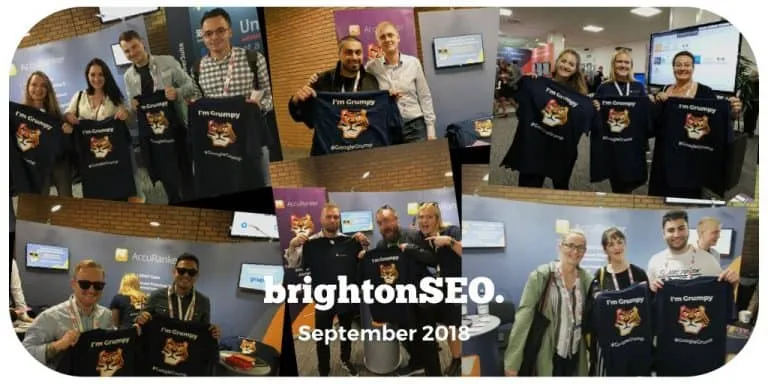
With almost 80 speakers on 7 tracks, BrightonSEO covered many important topics within search marketing:
Link Building and Content Marketing
Ross Tavendale – Data Journalism: A practical guide to winning big links
Ross talked about how to use data journalism as a tactic to win links in the biggest publications in the world. He explained his framework and methodology that allows you to come up with great on brand ideas.
Why are we doing this again? Because the data say so!
Ross went through his campaign Research, Angles and headlines to Pitch (RAP sheet), and where to get the data to make objective decisions. There are 3 data sources that can be used to tell a story: private data from analytics, public data from government databases and potential data from surveys.
 Ross Tavendale - BrightonSEO, September 2018
Ross Tavendale - BrightonSEO, September 2018In our methodology, the content finds the audience.
Meaning that, when you know your audience inside out, your content will definitely find them.
Stacey MacNaught – Securing Links Before You’ve Even Produced Your Content
Stacey talked about creating content for link acquisition and how to best go about it. She focused on explaining how to secure links even before you have produced your content.
Before going into content production you need to validate your idea, and have a list of well-researched medias and journalists who are already interested in your story. This will help you improve your ideas and secure interest.
Understanding audience is everything. Misunderstanding audience of your target publication is a common reason your content doesn’t get published. Study media kits to learn about their audience, as it is dangerous to make assumptions, and use the findings in your pitch emails. Make sure to pitch the most relevant department of the publication.
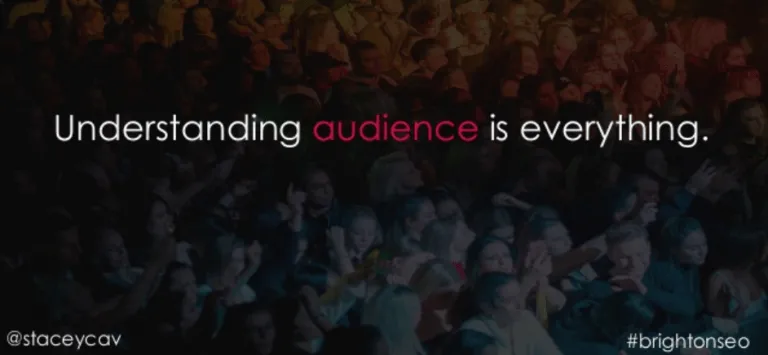 Stacey MacNaught - BrightonSEO, September 2018
Stacey MacNaught - BrightonSEO, September 2018
Technical SEO
Barry Adams – Technical SEO in the real world
Barry talked about the benefits of a good Information Architecture; why it is important and how it goes beyond site’s navigation. He gave examples of good IA that help websites perform better in search.
Faster website = more pages crawled by Google in the same amount of time. Reduce the volume of internal redirects to preserve link value.
He recommends reading The Anatomy of a Large-Scale Hypertextual Web Search Engine
Another lesson that Barry shared, is to put schema markup in the head section of the page’s HTML source if you want rich snippets in Google.

Helen Pollitt – Technical SEO Audit Top Tips for Beginners
Helen gave a rundown of Technical SEO audit tips. She went through the tips of what tools to use and how to crawl your site, and what to pay attention to in Google Search Console. She also gave tips how to optimize page speed and encouraged using Google Tag Manager.
Don’t forget to:
Check the speed for desktop and mobile.
Set a crawler to crawl sub-domains.
Check your site for HTTP resources.
Don’t block JS and CSS.
No Flash for a mobile site.
Dominic Woodman – If You Take One Thing from Technical SEO… Learn How to Debug
Dominic talked about the importance of debugging. Debugging is a specific kind of problem-solving. Break down, re-create and test to solve your problem.
Marketing problems are often hard only because there is so much complex language. Write as if you won’t come back to it for 2 months. In the future you will appreciate it. A problem you can’t consistently re-create is a problem you can’t test and solve. If you’re seeing in-consistent problems, they’re best spotted in logs.
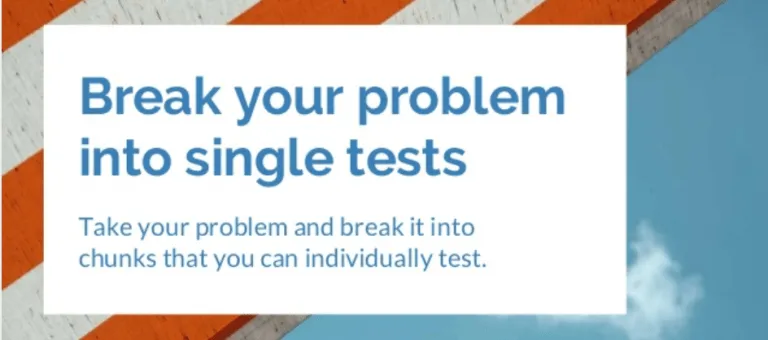 Dominic Woodman - BrightonSEO, September 2018
Dominic Woodman - BrightonSEO, September 2018
Take your problem and break it into chunks that you can individually test.
Site Speed
Fili Wiese – Accelerate: Page Speed Optimization Tips
Fili gave tons of page speed optimization tips in his speech. He also ran a training session on Thursday: Advanced Technical On-Page SEO Training Course.
Fili shared unique insights and lot of practical hands-on tips, ideas, strategy-considerations, options and tactics on how to make your website super fast for the mobile-first world, including implementing AMP, optimizing HTML and many others. His speech was as packed with tips as the auditorium itself.
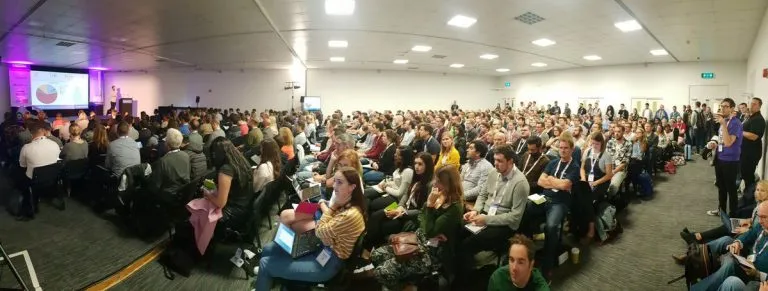 Fili Wiese - BrightonSEO, September 2018
Fili Wiese - BrightonSEO, September 2018SERPs
Rand Fishkin – The Future of SEO is on the SERP
Rand focused on the changing search landscape, and how Google is making it more difficult to win in SEO and social channels compared to previous years.
Rand covered the ways to get a strong ROI from search investments:
Focus on your brand
Control your branded SERP reputation management
Influence the publishers listed in featured snippets
Invest in ON-SERP SEO
Rand pointed out that Google cares about itself, not about anyone else. “It’s never been more difficult to earn organic traffic and it’s never been more important”.
Before the event Rand Fishkin asked on his Twitter if people have observed that tweets containing links have less visibility on page, because Rand has noticed that simple tweets (without the link) perform much better, meaning that they have higher engagement, reach and more impressions.

During his keynote at Brighton he concluded that all posts, which include links on LinkedIn and Twitter (and on Facebook likely too) give less visibility. Therefore it’s better to include link under the post in first comment to get higher visibility.
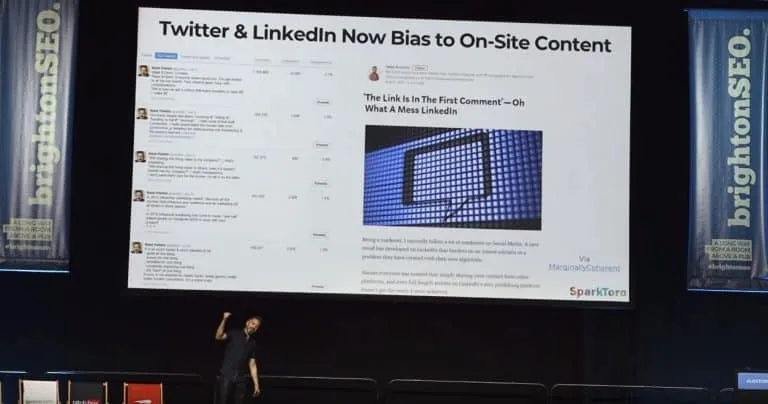 Rand Fishkin - BrightonSEO, September 2018
Rand Fishkin - BrightonSEO, September 2018Question and Answer Session with Rand Fishkin
With the raise of smart speakers what are your thoughts on voice search, and what effect will it have on an SEO do you think?
I think smart speakers are an additive to search rather than a cannibalistic one. I don’t think we will see this big shift of keyword demand away from phones and desktop, devices, laptops, browsers. I suspect that most of the queries that we will do on all of these types of devices are going be unique. There are maybe a few areas like weather or sports score that Google is already doing an instant answer. I don’t see a massive risks there. I also suspect that in long term there will be some opportunities for organic or paid forms of sponsorship to get your brands into this.
 Rand Fishkin- Q&A during BrightonSEO, September 2018
Rand Fishkin- Q&A during BrightonSEO, September 2018
Google AMP – Is it just another fad or is is another feature?
I think a year ago I would have said it’s a future and right now I feel like it might be a fad. It might be more like Google Plus than like mobile search. A lot of publishers are rebelling against the user experience control. Implementing AMP is nearly as challenging as making your own very fast mobile website, and I think it could be a fad. I am hopeful that it is because I think Google controlling the web with AMP is not a good thing.
What is your advice for any SEO professionals for the next year, and what do you think it will be in 5 years time?
5 years is a very long time. Google's rate of change is not nearly as fast as it was let's say in 2001 or 2005 or even 2010. My suspicion is that we will see a continuation of transformation we see today. Google is trying to answer more queries themselves, breaking into more vertical themselves, cannibalizing a lot of search opportunities, especially for high commercial intent or easy to answer information queries. That means marketers need to be much smarter and more targeted with their keyword targeting and keyword research. Choosing words and phrases that Google can’t instantly answer and can’t cannibalize and can’t take away from them. I think it will mean a lot more SEO's focus on content marketing, focus on brand demand generation. So more people look for your brand and it will be a lot more folks trying to figuring out ways to drive additional kind of traffic not just SEO.
Izzi Smith – Practical Insights into Winning Featured Snippets
Izzi told us why she loves featured snippets and why we should too. The reasons why she loves them are because they are just cool: they bring more traffic, more conversions, brand awareness, mobile voice search.
 Izzi Smith - BrightonSEO, September 2018
Izzi Smith - BrightonSEO, September 2018
It’s crucial to identify the right queries and evaluate your current rankings as well as your potential rankings (via GSC in Google Analytics). Talk to you customer support and sales teams to see what questions they get asked and research using tools like Answer the Public. Asses the query intent and focus on keywords with click-through intent.
Provide the perfect content that is worthy for featured snippets: factual with supporting data and sources, written for humans and please ignore keyword density! Remember to structure your content: the best paragraph length is 40-60 words, list articles with clear headers, and bulk out your lists (this will increase click-through-intent on featured snippets). Prove your expertise by providing additional, useful content and referring links from trusted sources. Optimize your images so they are topic relevant, smaller than 600px and compressed.
And it’s simple as that: Izzy showed how some steps increased sessions and bookings for Sixt’s website.
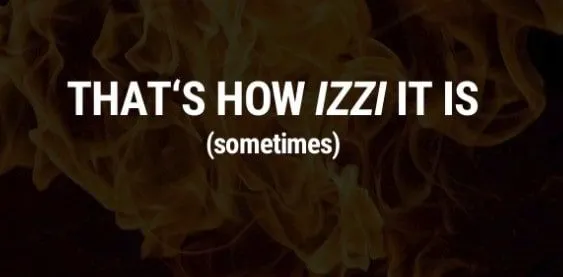 Izzi Smith - BrightonSEO, September 2018
Izzi Smith - BrightonSEO, September 2018
Eloi Casali – SEO in big media agencies
What big agencies have learned from SEO
Eloi outlined three SEO practices that are impacting other channels massively and what big agencies have learned from SEO. Eloi said that users won’t have to visit websites anymore and also refers to Rand Fishin’s “No click searches”.
Analysing the data in order to understand how SEO affects big marketing campaigns and how marketing campaigns affect SEO in three core topics:
Surfacing content on the SERP and its impact on PPC.
The key to talking about speed optimisation.
Voice: a framework to estimate the volume of effort to place on voice in your search strategy.
One of his 3 take outs? Don’t invest without a proof. No one does.
Hannah Thorpe – SEO without traffic
In Hannah opinion (as well as Rand Fishkin’s – from Q&A at BrightonSEO) we live in a “brand demand generation”. Brand is a ranking factor, which you should definitely focus on to be few steps ahead of the competitors. Your brand should be easily searched, useful, known and linked to.
 Hannah Thorpe - BrightonSEO, September 2018
Hannah Thorpe - BrightonSEO, September 2018Even Google has to know your brand. It’s important to make people think about your brand, talk about it, search for it and finally choose it. Google needs to see that you’re preferred brand, how you stand out comparing to your competitors, and why customers choose you.
Looking what your competitors are doing is very important
We don’t really know what will happen with SEO in a few years. We know it will change, and we know it will be different but not how.
SEO is in its infancy.
Google as search engine is only 19 years old and as far as we know Google’s algorithm uses Machine Learning which understands synonyms – meaning that Google also understand related searches!
Google is constantly changing together with the search industry. We have to take a few things into consideration: what makes up the algorithm, how do we work as SEOs and how results display in the SERPs. What we do know from Hannah is that “Standard SEO Tools struggle to predict more than 15% of ranking positions” and that high rankings do not equal high traffic, which means that we have to be user-centric by understanding the customer’s journey and the exact moment they are in.
Simplify our content and structure your data, use the basic format understandable for everyone, and be clear on what you are trying to provide to users.
 Hannah Thorpe, BrightonSEO, September 2018
Hannah Thorpe, BrightonSEO, September 2018
Patrick Reinhart – Indexation, Cannibalization, Experimentation, Oh My!
Patrick spread his knowledge about 3 main topics:
Indexation
Cannibalization
Experimentation
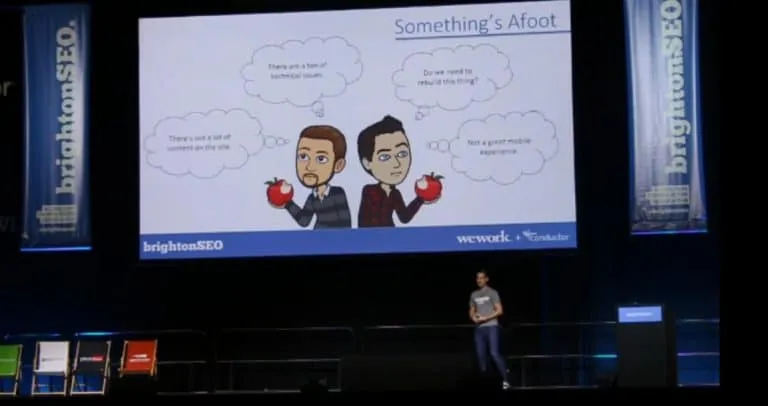 Patrick Reinhart - BrightonSEO, September 2018
Patrick Reinhart - BrightonSEO, September 2018
There are a lot of issues which are not allowing search engine to get to the important pages such as duplicated content, technical issues or not a great mobile experience. Patrick pointed out that the real problem is a massive index bloat.
Google can’t get to the important pages because it can’t get through all of the junk.
It’s tricky to find out what is junk and what’s not therefore you have to find what are the issues like:
- Duplicate pages
- Paginated pages
- No canonicals
He recommended an automated way of checking for cannibalization because your site grows and changes.
Don’t compete with yourself and alter your plan to equalize with your clients comfort level.
Local SEO and Voice Search
Greg Gifford – How to use local to rock in mobile and voice search
Greg explained how to use Local SEO to win at mobile searches. Thanks to digital assistants, people are becoming more comfortable with searching by spoken queries. Voice search is changing how users construct their queries – queries are becoming longer, more conversational and long tail queries. Most voice searches happen on mobile devices, and and mobile searches are inherently local. Local SEO is accelerating thanks to mobile and voice searches.
58% users have used voice search to find local business information, so this is why local SEO is crucial when it comes to voice search. Voice search tends to be more informational intent than discovery or purchase intent.
80% of Google Home answers come from featured snippets. To show up in voice results you need to get on featured snippets.
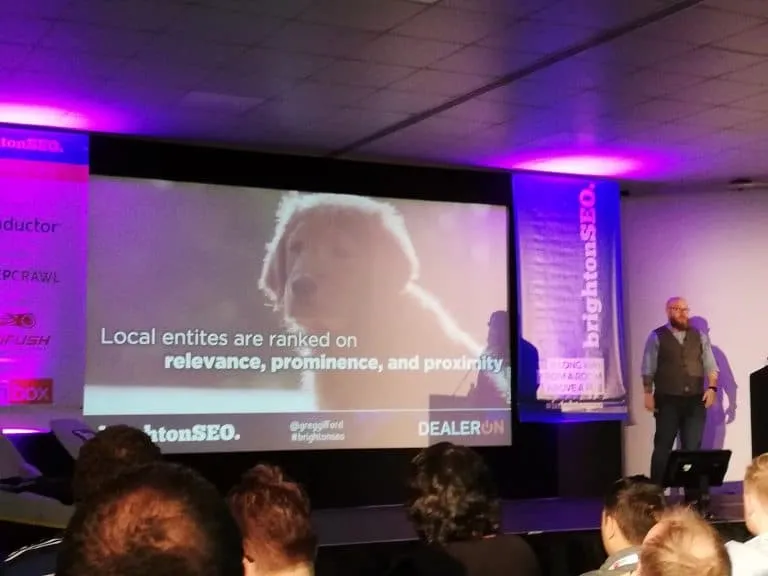
Local SEO is about entity signals.
Local entities are ranked on relevance, prominence, and proximity.
Mobile & AMP
Natalie Mott – AMP Implementation on Non-Standard Content Management Systems
Natalie’s session was about the challenges of implementing AMP with CMSs that do not have an out-of-the-box solution, like EPiServer. She shared practical tips for working with developers on different projects:
There are many misconceptions about AMP and what it can do to improve SEO performance.
Still highly recommended for publishers, and for sites that operate in verticals where the technology has been more routinely adopted, such as insurance.
Certain CMSs do not always make it easy for marketers to improve site speed, therefore there are situations where AMP may be the preferred option to improve site speed on mobile.
Often it is more appropriate to improve site speed through alternative methods than by implementing AMP.
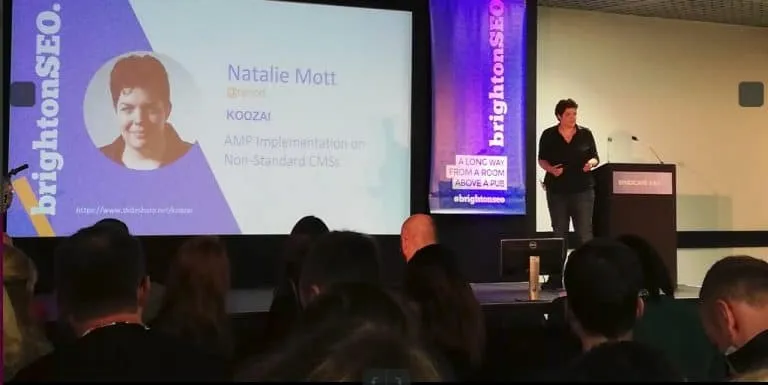 Natalie Mott - BrightonSEO, September 2018
Natalie Mott - BrightonSEO, September 2018
Paid Social
Byron Marr – Using Facebook Funnels to Improve E-Commerce Campaign Targeting
Byron is working mostly with Facebook ad campaigns and at BrightonSEO his speech was about improving the efficiency and return on investment in Facebook advertising campaigns.
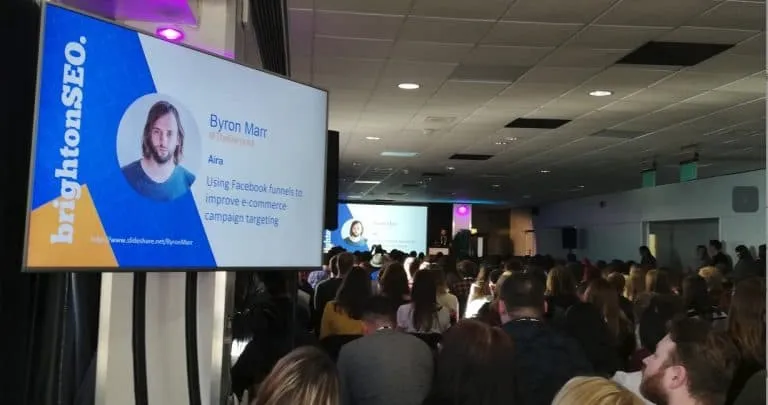 Byron Marr - BrightonSEO, September 2018
Byron Marr - BrightonSEO, September 2018
To put it simply, we could learn from him how to recognize the targeting opportunities through the buyer’s journey and create a customized audience strategy using Facebook analytics channels. It’s important to target users based on their demographics and their interests, finding people similar to your customers with a Lookalike audience. He shared his experience on improving his ad campaigns and saving time by starting with Facebook Analytics and creating a funnel to visualise the conversion path to be able to identify 3 things:
The right person
The right time
The right message
As a result that brings more leads and revenue.
New traffic will also be pushed through the funnel that you’ve set up. As one of the examples on how to implement these ideas in real life he took AccuRanker’s Sponsored InMail message by iEva Zelca – the message contained a short and simple information about the tool and it allowed you to try it out.
So remember to:
Identify new opportunities
Create relevant ads
Measure and optimize
Read more about Facebook Boosted Posts and know the reasons why you shouldn’t do them.
Content Marketing and Strategy
Bobbi Brant – How to Use Live Video in Content Marketing
Bobbi was talking about how to use live videos in content marketing.
It’s very easy to do it ! Anyone can do it and should do it!
Are you wondering why?
78% of online audiences are already watching Facebook Live content and 81% watched more live videos in 2016 than 2015.
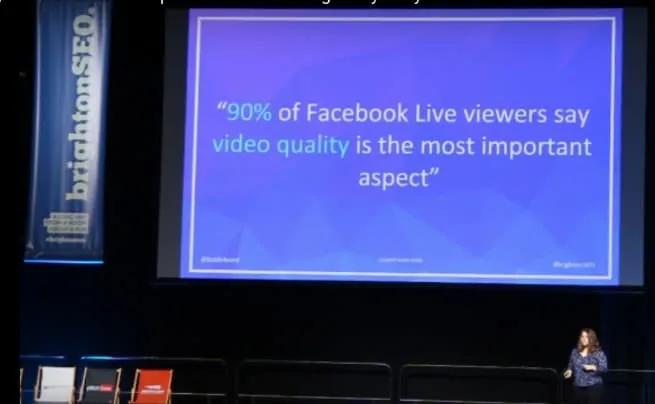 Bobbi Brant - BrightonSEO September 2018
Bobbi Brant - BrightonSEO September 2018
90% of Facebook Live viewers say video quality is the most important aspect.
Matt Siltala – Are You a Content Creator, or a Content Documenter?
Key takeaways from Matt where mostly from his clients who are saying to create more content, infographics and videos and of course be active on social media. And that’s all true. The point is that it’s crucial to do this properly and in the right time with exact aim of each of the activities.
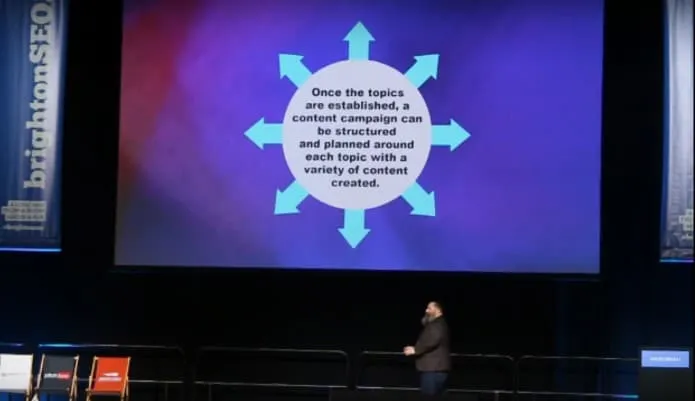 Matt Siltala - BrightonSEO, September 2018
Matt Siltala - BrightonSEO, September 2018
On his own example, he said:
I have reasons to follow them because I know what kind of content they gonna deliver me at a certain point in time.
Once the topics are established you can use them in many different options, e.g.:
To gain more leads
Pay attention to what’s going on
Meghan Fenn – Using Stunning Design to Leverage Your SEO
Meg was talking about graphic design, websites, the people behind web projects, UX, collaboration and bridging the gap between SEO and design to create a smoother projects and better websites, which is of course something that we all want.
Communication is the key, but also graphic design is crucial in being able to communicate effectively - it inspired people to take action.
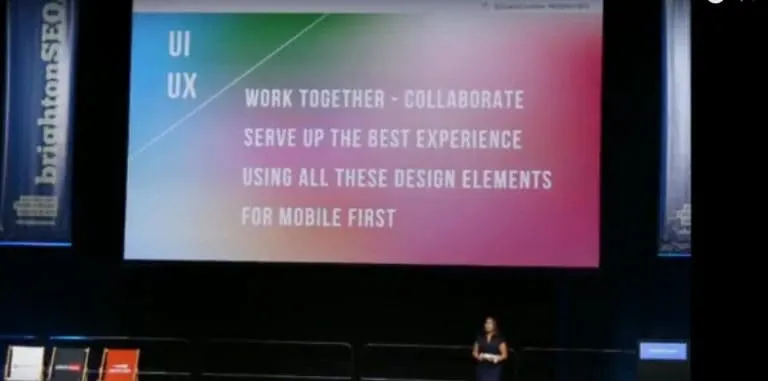 Meghan Fenn - BrightonSEO, September 2018
Meghan Fenn - BrightonSEO, September 2018
How you can bridge the gap between design and SEO for a better flow between projects?
The answer involves 3 things:
UI - small things makes a difference and they can have a positive impact
UX - emotions, responses
Collaboration
SEO’s have to optimize for humans to get an emotional connection, a real connection. We should offer a better experience for users, who will then engage and buy and additionally share.
Factors that we should take into consideration
Time on site
Page speed
Bounce rate
It’s crucial to build trust with users and you can do this by using interesting and high-quality photos, increase the speed of your website and mobile friendliness. But only that. Your site should be accessible on all devices, and of course use correct spelling. Even the color of the website is important here. I.e. orange is a warm color, associated with joy and represents creativity, encouragement and fascination.
The devil is in the details and that’s what we should take care of.
Slides from BrightonSEO September 2018 edition
Aiden Carroll – It’s A Stitch Up! Sewing Up Consumer Intent With Keywords
Aleh Barysevich – Winning with mobile page speed
Arianne Donoghue – Why Failure Should Be An Option For All Of Us
Alban Renard – The subtleties of Google search in French
Barrie Tynemouth – Online Price Tracking and Price Wars
Bobbi Brant – How to Use Live Video in Content Marketing
Briony Gunson – Effective Planning for Small to Medium Sized Agencies
Byron Marr – Using Facebook funnels to improve e-commerce campaign targeting
Björn Beth and Svetlana Stankovic – Make data dreams come true! Bridging the gap between ranking factors and your SEO strategy
Charlie Marchant – How to Get Links for Your Business
Chris Simmance – 2 Seconds is the New Slow
Christoph Cemper – 20 free SEO Tools you should be using
Clark Boyd – How to Optimize for Visual Search
Daiana Damacus – Putting the social in social search engines
Dominic Woodman – If you take one thing from technical SEO… Learn how to debug
Emily Grossman – 13 Reasons Why You’re Slow (and what you can start to do about it)
Elli Bishop – How to recruit and train a killer PR and Outreach team
Eloi Casali – What big agencies have learned from SEO
François Goube – What I learned from crawling 10 billions of Pages and analysing 5 Trillions of log lines
Gareth Hoyle – Advanced PPC and Paid Social Tactics
Gianluca Fiorelli– The Future of Visual Search
Grant Simmons – The Batman SEO Toolbelt to Vanquish Google’s SERP
Greg Gifford – How to use local to rock in mobile and voice search
Hannah Thorpe – SEO without traffic
Helen Pollitt – Technical SEO Audit Top Tips for Beginners
Izzi Smith – Practical Insights into Winning Epic Featured Snippets
Jack Cooper – Scaling Large E-commerce Catalogues for PPC
John Brasington – Contextual optimisation: How to create value led content for your ecosystem
JP Sherman – Delivering Better Onsite Search Results
Kim Dewe – How To Automate Key SEO Processes using API’s and Google Sheets
Laura Hogan – How To Use Your Competitors For Freeeee Links
Luke Sherran – Video Ranking Factors in YouTube
Marie Haynes – Super Practical Nuggets from Google’s Quality Raters’ Guidelines
Mark Thomas – Why auditing your rel canonical configuration is shrewd move
Max Prin – PWA + AMP: The Future of E-Commerce?
Meg Fenn – Using stunning design to leverage your SEO Brighton SEO
Michael King – Software Testing for SEO
Matt Siltala – How to create the best content in the world
Miracle Inameti-Archibong – We made our website a progressive web app and why you should too
Prabhat Shah – Amazon SEO Tools I wound’t Avoid
Rachel Costello – How To Tackle Enterprise Sites
Rand Fishkin – The Future of SEO is on the SERP
Ross Tavendale – Data Journalism: A practical guide to winning big links
Sam Marsden – Automating SEO Reporting With Google Data Studio
Sarah Bradley – Getting Student’s Attention on Social Media
Sean Butcher – How to Improve Your Website’s Indexation
Stacey MacNaught – Securing Your Links Before Producing Your Content
Vicki Jakes – The Final 10 Percent
Zanna Pupele – Site adaptation for foreign markets – trust signals
In case you missed the previous BrightonSEO in spring, we have also gathered 7 key takeaways from BrightonSEO April 2018 edition here.
For more inspiration from world class speakers, check out our sum-up of the top 10 UnGagged London 2018 speakers in this article.
Related blog posts

How to Find the Best Prompts to Track for AI Visibility
Do you want to start tracking prompts to optimize your AI visibility? We give you seven practical ways to identify relevant prompts to track in LLMs.
9 November 2025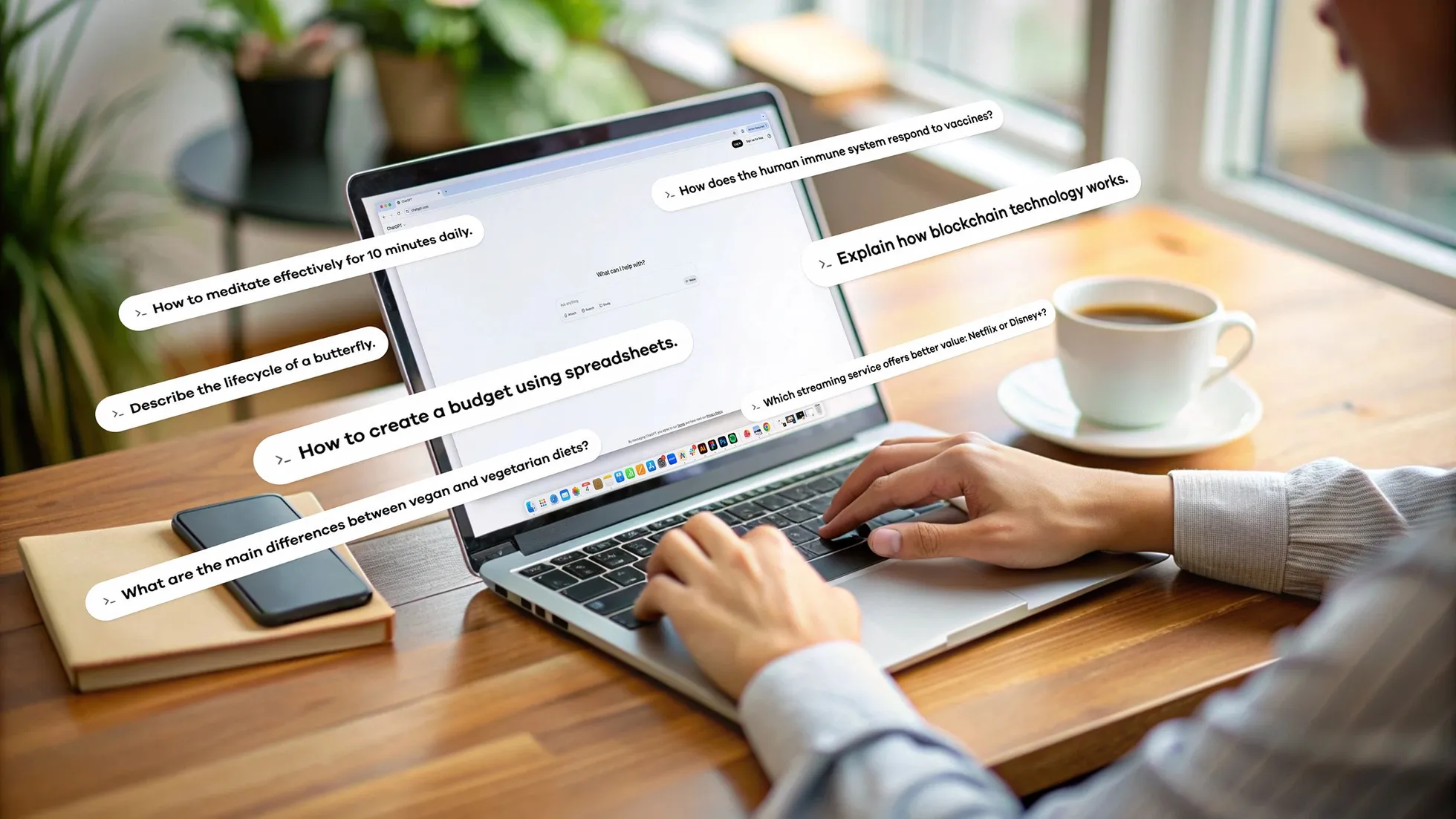
What AI Prompts Are and Why You Should Track Them
SEO is now both about tracking keywords and prompts. Learn what prompts are and how tracking them gives you the LLM insights you need.
3 November 2025
Track Your LLM Performance with AccuLLM
You can now track ChatGPT, Perplexity, AI Overview, and AI Mode with AccuLLM. Learn how we help you monitor your LLM performance.
20 October 2025



